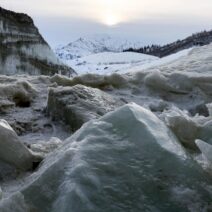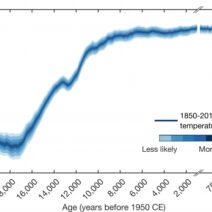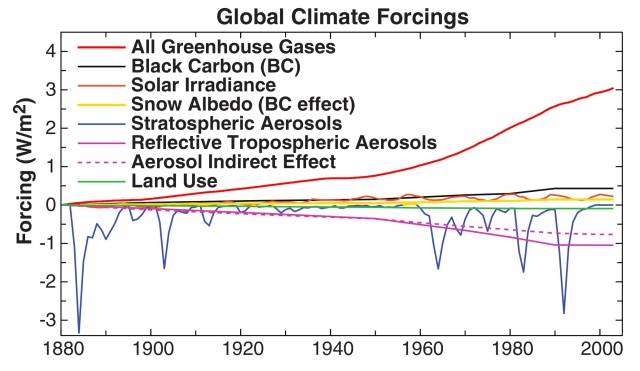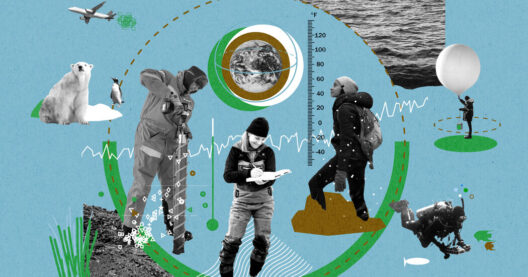As the Earth continues to experience unprecedented changes in its climate, one pressing question remains: how do scientists prove global warming is man-made? While some may argue that climate fluctuations are merely a natural phenomenon, a multitude of evidence points steadfastly to human activity as the principal catalyst for climate change. Understanding this connection is crucial for developing effective strategies to mitigate its impacts and promote environmental stewardship.
First, let’s delve into the basic tenets of climate science. At the heart of the matter lies the greenhouse effect: a natural process where certain gases in the Earth’s atmosphere trap heat, ensuring our planet remains warm enough to support life. However, the augmentation of these greenhouse gases—chiefly carbon dioxide, methane, and nitrous oxide—originating from anthropogenic sources has significantly intensified this effect. This begs the question: How do we decipher the human influence from the natural fluctuations we’ve observed throughout Earth’s history?
One pivotal scientific approach in discerning man-made climate change involves the examination of atmospheric carbon dioxide levels over time. Using ice core samples from Antarctica and Greenland, scientists can analyze air bubbles trapped in ancient ice layers to reconstruct past atmospheric conditions. These records clearly illustrate a significant upsurge in carbon dioxide levels since the Industrial Revolution, correlating directly with increased fossil fuel consumption and deforestation. This historical perspective is essential; it provides a timeline that juxtaposes natural variability against rising human emissions. The results are striking and serve as a baseline for understanding current climatic changes.
In addition to ice core data, scientists utilize sophisticated climate models that simulate Earth’s climate system. These models incorporate various variables, including greenhouse gas concentrations, solar radiation, and volcanic activity. By running simulations that account for both natural and anthropogenic factors, researchers can compare their predictions against real climate data. When these models include human influence, they accurately replicate observed warming trends. Conversely, models that account solely for natural variables fail to explain the observed changes. This stark discrepancy underscores a crucial point: human contributions are not just important; they are indispensable in understanding contemporary climate patterns.
Another compelling piece of evidence lies in the concept of “fingerprinting.” This technique involves identifying distinct patterns of climate change that can be traced back to specific causes. For instance, the distinctive warming observed in the lower atmosphere can be linked to increased greenhouse gas concentrations, primarily caused by human activities. This approach allows scientists to connect the dots between specific human actions and their effects on climate, further solidifying the argument for anthropogenic warming.
One cannot ignore the role of satellites and advanced remote sensing technology, which have revolutionized how we observe and understand our planet. These tools provide invaluable data regarding land use changes, atmospheric composition, and global temperatures. Trends captured through satellite observations highlight alarming changes, like the rapid melting of polar ice caps and the retreat of glaciers, serving as visual testimony to the effects of climate change. Ultimately, the synergy between satellite data and ground-based observations creates a more comprehensive picture of how human activities are reshaping our climate.
While the evidence is compelling, it’s also essential to address the subsequent effects of climate change and the implications for both natural ecosystems and human societies. Increased warming contributes to the frequency and intensity of extreme weather events—hurricanes, droughts, and floods—resulting in economic and ecological stress. These repercussions illustrate the profound interconnectedness of human activity, climate, and the vulnerability of our planet’s systems. Yet, reflecting on the deeper consequences of anthropogenic global warming could lead one to ponder: are we prepared to face the impending repercussions of our actions?
Moreover, the interactivity between scientific research and policy is crucial as the world seeks to address the climate crisis. The synthesis of evidence from various domains allows for informing policies that aim to reduce emissions and transition towards a sustainable future. International agreements, such as the Paris Agreement, underscore the necessity of collaborative efforts to curb greenhouse gas emissions and transition to renewable energy sources. Each targeted measure, from carbon taxes to reforestation initiatives, reflects an understanding of the human impact on climate change and the need for immediate, sustained action.
Given the overwhelming scientific consensus on climate change and its anthropogenic origins, engaging in informed discourse becomes imperative. Recognizing the validity of these findings is not just about understanding the science; it’s also about promoting awareness and mobilizing action. Society stands at a crossroads, with the potential to forge a more sustainable future through innovation and commitment to reducing carbon footprints.
In conclusion, the cumulative evidence elucidates a clear message: while climate can and does change naturally over time, human activity is unequivocally affecting our planet’s climate today. From ice core samples to advanced climate models, the scientific community has established a robust framework that supports the assertion that global warming is largely man-made. As stewards of the Earth, it is our responsibility to heed this warning, to educate ourselves and others, and to advocate for change, ensuring a viable planet for future generations. Will we rise to the challenge, or will we be passive observers of our impending fate? The choice is ours.




